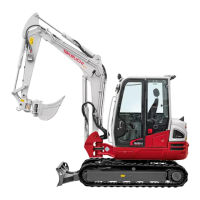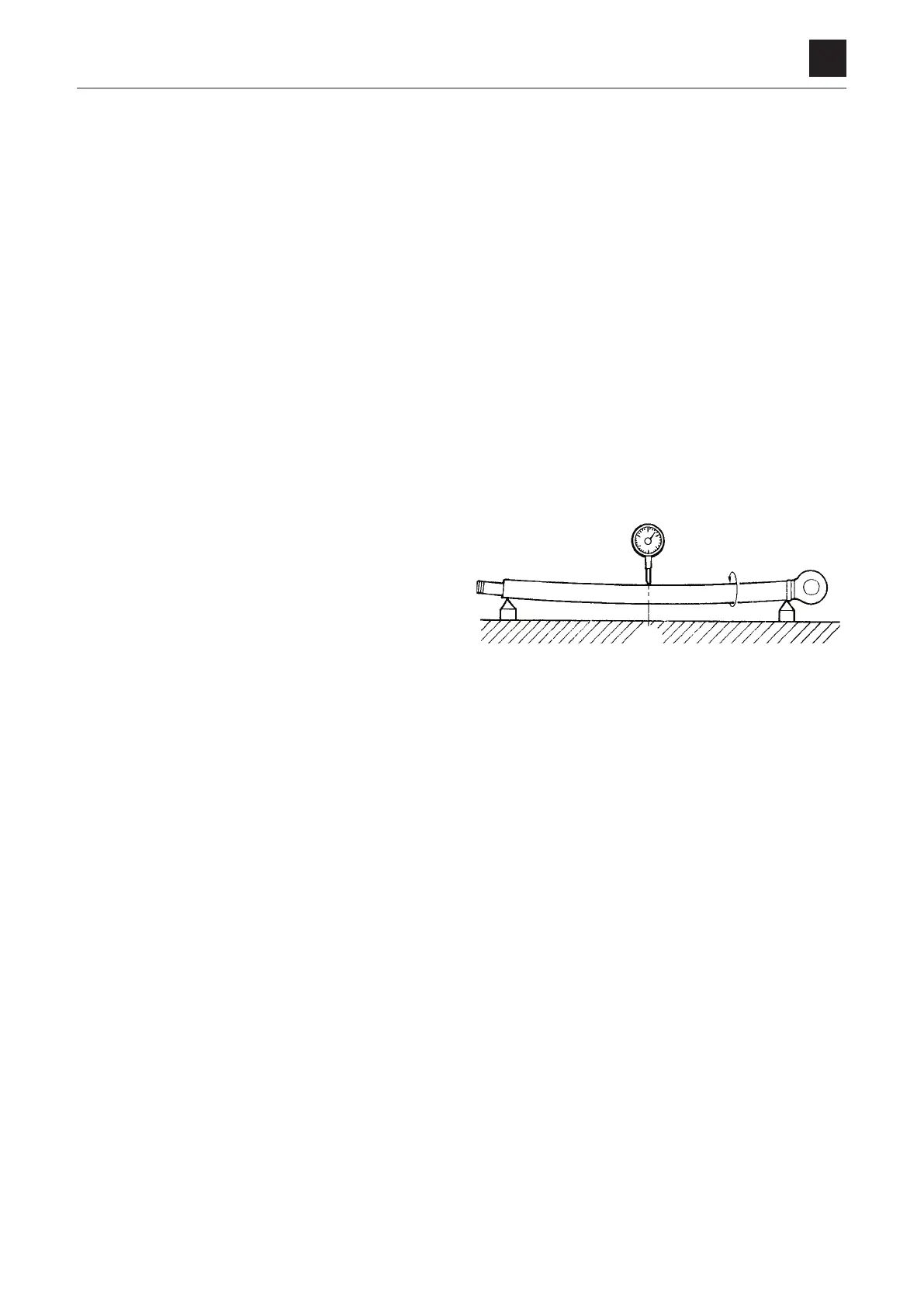4-142
4
CYLINDERS
DISASSEMBLY AND ASSEMBLY
Inspection and adjustment
Inspection after disassembly
Clean each part thoroughly with cleaning oil, then carry out
the following checks. When a cylinder has been disassem-
bled, r
eplace all the seals with new ones.
1. Piston rod
• Replace the rod if there are cracks.
• If the threads are damaged, repair them or replace
the rod.
• If the plating layer of the plated portion is broken,
rusted or scratched, replace the rod.
• If the rod is bent more than the limit of 1 mm in 1 m,
replace it. (For the measurement method, refer to
the figure on the right.)
• If the inner diameter of the clevis bushing is worn,
replace the bushing.
Measuring the bend
a. Support the portion of the rod with the same diam-
eter at both ends on V
-blocks.
b. Set a dial gauge at the center between the two
blocks.
c.
Rotate the rod and take a reading of the maximum
and minimum run-out indicated by the dial gauge. If
the bending of the rod is within the above limit, yet is
bent a lot in a small distance so that it will not move
smoothly, replace the rod if it makes a squeaking
sound in the operation test after reassembly or if it
catches during movement.
2. Tube
• If there are cracks in the welded portion, replace the
tube.
• Replace the tube if the inside surface is scratched or
if it leaks hydraulic oil.
• If the inner diameter of the clevis bushing is worn,
replace the bushing.
3. Rod cover
• If the bushing inner diameter is worn and the clear-
ance
with the piston rod is greater than 0.25 mm,
replace the bushing.
• If the inside surface of the bushing is scratched, and
the scratches are deeper than the depth of the coat-
ing layer
, replace the bushing.

